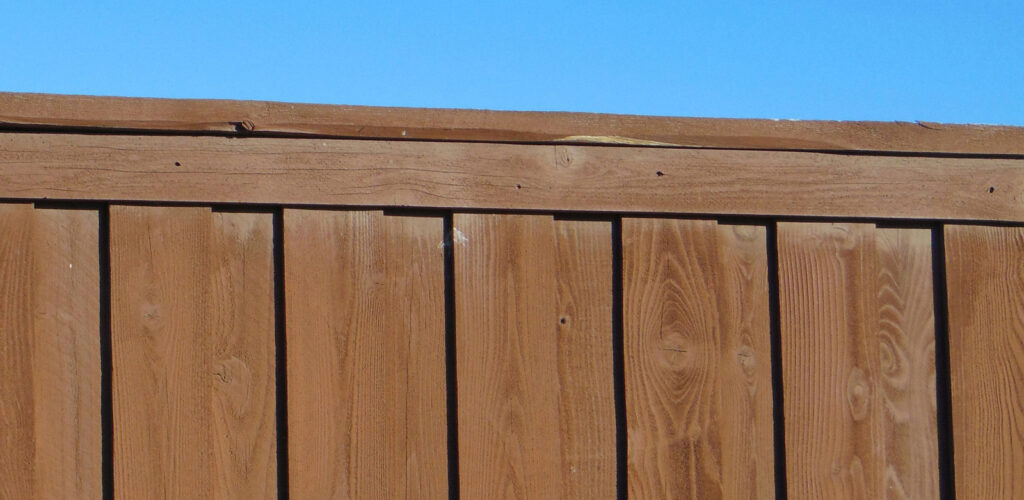Should I Paint or Stain My Fence for Best Results?
Key Takeaways
- The key differences between stain and paint for wood fences
- How the Rogue Valley climate affects your finish choice
- Pros and cons of both finishes, including maintenance
- When staining is the better long-term investment vs. when paint makes sense
Choosing the right finish for your wood fence does more than improve curb appeal — it directly impacts lifespan, maintenance needs, and how well your fence stands up to Southern Oregon weather. With our wet winters, intense summer sun, and the occasional wildfire smoke exposure, your fence needs a protective coating that fits your goals and the wood itself.
In this guide, we’ll break down the differences between stain and paint so you can feel confident you’re making the right investment for your home.
Staining a Fence: What to Know
Staining preserves and enhances the natural beauty of wood while providing long-lasting weather protection. It’s the most popular choice across Southern Oregon for cedar privacy fences and other exposed wood structures.
Benefits of Fence Staining VS Painting
Stain penetrates into the wood instead of sitting on top like a film. That means it moves naturally with the wood as moisture and temperatures change, helping prevent cracking and peeling.
- Allows wood grain and texture to show
- Better moisture resistance for rainy seasons
- More breathable — reduces peeling risk
- Typically easier to maintain and recoat
- Great for cedar, redwood, and pressure-treated lumber
Things to Consider
Stain does require reapplication over time — especially in high-sun areas or shaded spots where moss and algae may form. For more guidance on timing, see our article: How Often to Restain a Fence.
Painting a Fence: What to Know
Painting creates a solid film over the wood, offering the strongest UV protection and the ability to drastically change the fence’s appearance.
Benefits of Fence Painting VS Staining
Paint can refresh aging fences and provide bold design options when you want a more uniform look.
- Excellent UV protection to combat color fading
- More color choices — including whites and bold tones
- Strong surface coverage to hide imperfections
Things to Consider
Wood naturally expands and contracts with Oregon’s seasonal moisture changes. Because paint forms a surface layer, those movements may eventually lead to cracking, chipping, or flaking — especially if the fence wasn’t prepped correctly.
Peeling issues are a common reason homeowners choose to switch from paint to stain during restoration.
Which Lasts Longer in Southern Oregon?
Both can last — if applied correctly — but in general:
- Stain ages more gracefully
- Paint fails more visibly
Stains typically soak in and fade gradually over 2–5 years, depending on the level of sun exposure and the quality of the product.
Paint may last 4–7 years but will eventually crack or peel once the seal is compromised, especially near soil and sprinklers where moisture exposure is highest.
Maintenance Differences
Fence Stain Maintenance
- Hose-off cleaning once or twice a year
- Occasional soft-wash for algae or mildew buildup
- Recoat when color fades — minimal scraping needed
More on proper prep here: How to Clean a Fence Before Staining
Fence Paint Maintenance
- More surface prep before repainting
- Touch-ups are visible if the color isn’t matched perfectly
- Peeling requires sanding, scraping, and primer
Style Preferences: Which Look Do You Want?
If you love seeing the natural grain of the wood, stain is the clear winner. It blends well with the tree-lined landscapes of Southern Oregon, and HOA guidelines often prefer natural wood tones.
Paint works best for a cohesive color scheme when matching trim, siding, or garden structures. It also helps modernize older fences.
Cost Considerations
Pricing depends on fence size, prep needs, and product type. In most cases:
- Staining costs slightly less upfront
- Painting costs more due to additional labor and primers
However, the difference in long-term upkeep may flip the investment depending on your maintenance expectations. If your fence is new, see: When to Stain a New Fence
Paint or Stain My Fence? (Professional Recommendation)
In most cases across Grants Pass, Medford, and the wider Rogue Valley, stain is the better long-term choice for wood fences.
It looks natural, holds up better to wet-winter expansion, and simplifies future maintenance.
Painting makes sense when:
- You want full coverage or a non-wood color
- You’re updating an older fence that’s already been painted
- You’re matching house or trim colors for a cohesive look
If paint is peeling on your home too, see: Signs It’s Time to Repaint Your House Exterior
Ready to Paint or Stain Your Fence?
Whether you want a stained wood look or a bold painted finish, Pacific Home Painting makes sure your fence is protected against Rogue Valley weather year-round. We handle everything from prep and cleaning to final coatings — so all you have to do is enjoy a beautiful, long-lasting fence.
Contact us today for a free quote.
FAQs
Yes — cedar performs best with staining because it can breathe naturally and resist peeling.
Yes, but all peeling paint must be removed first so stain can fully penetrate.
Most wood fences need time to dry after installation. For example, new fences need 4-8 weeks to dry before staining.
